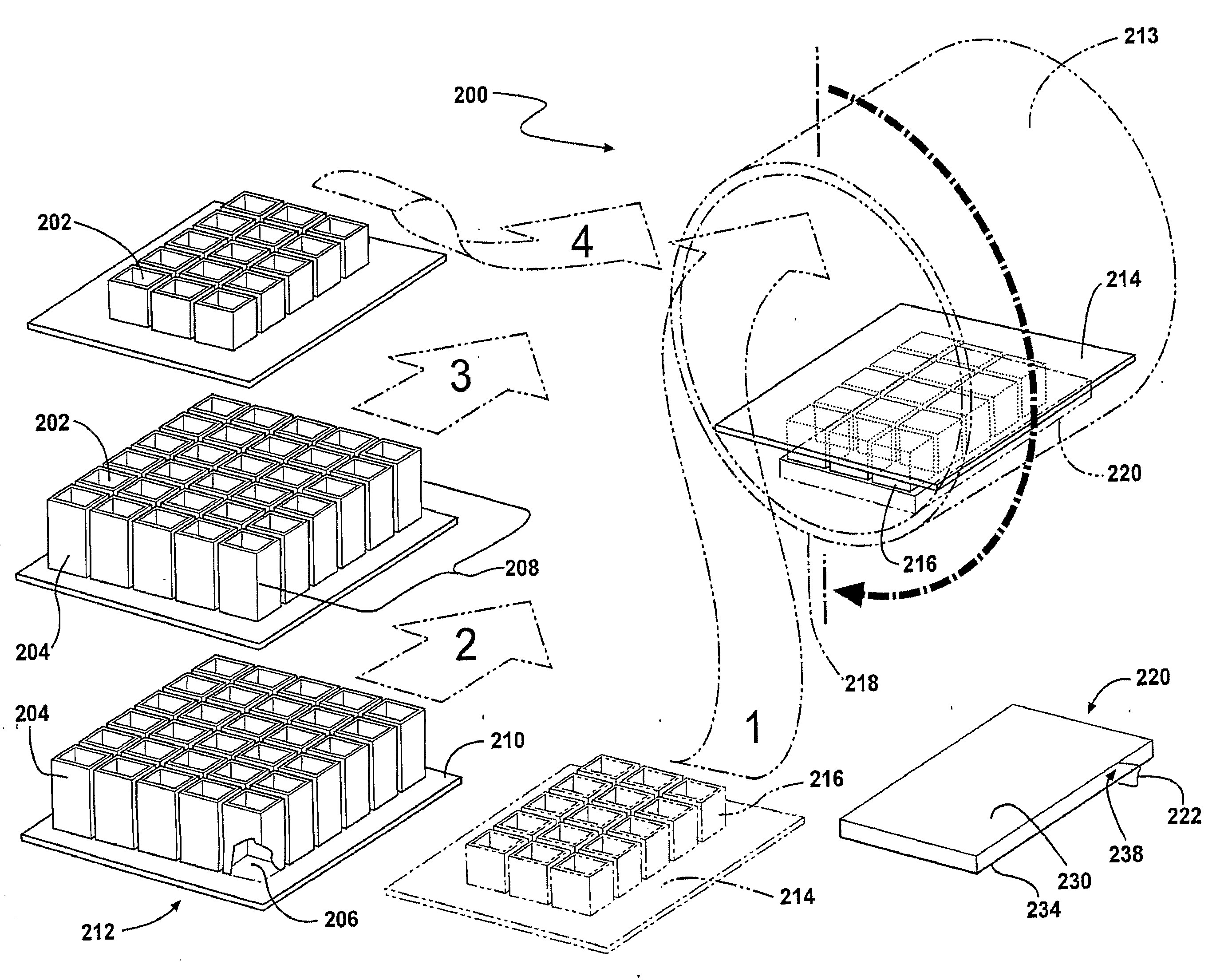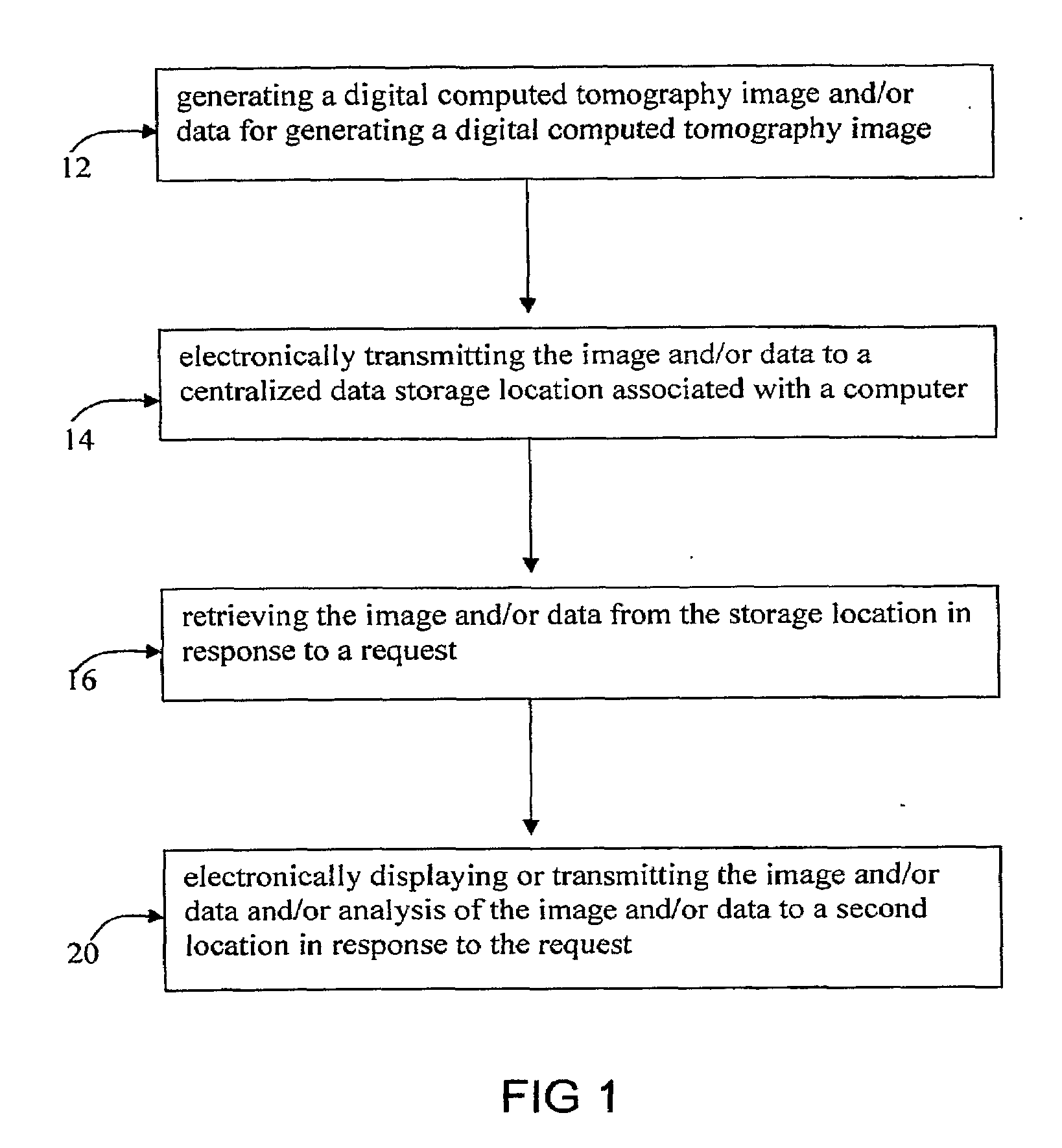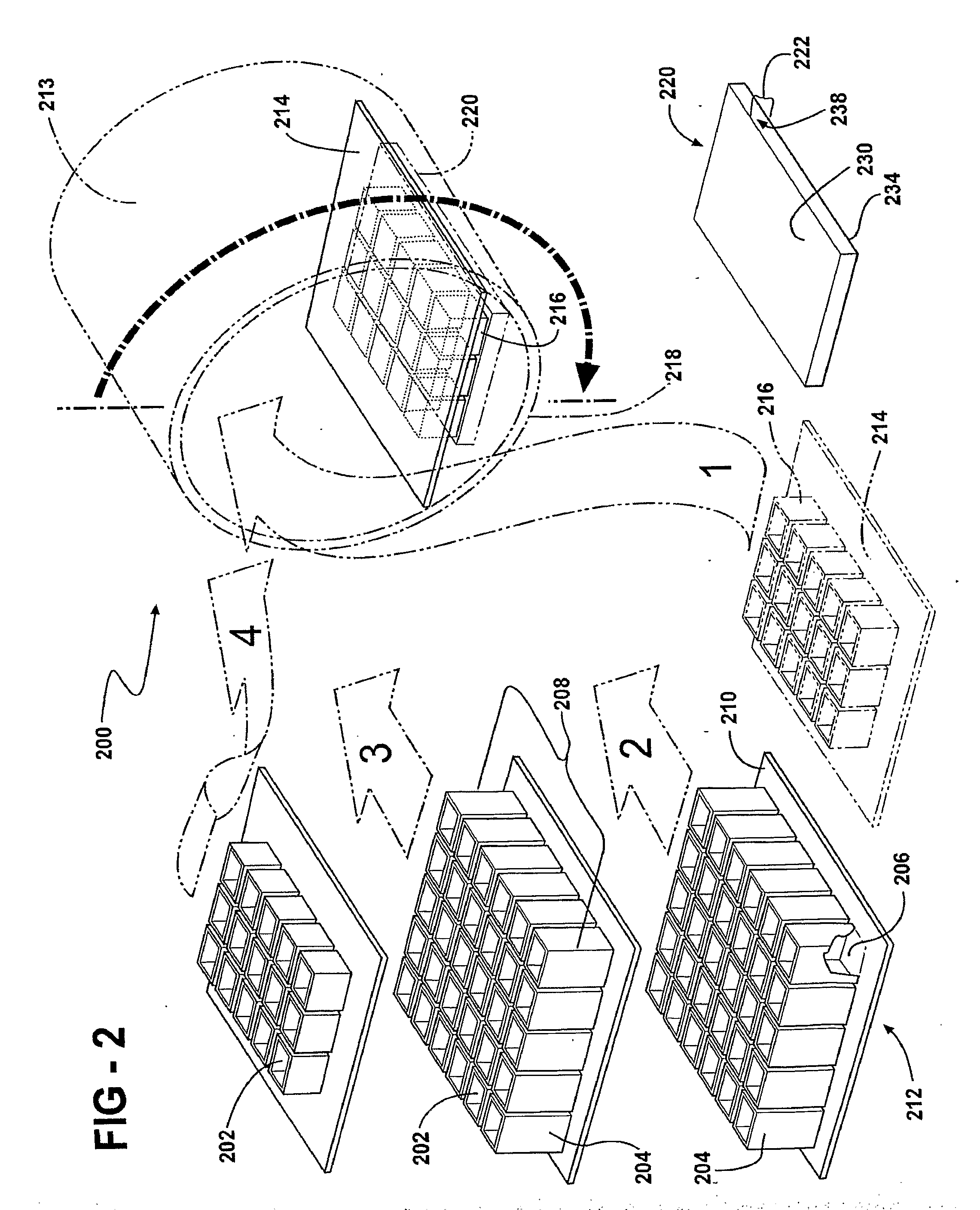Process and apparatus for imaging
a technology of process and apparatus, applied in the field of composition, processes and apparatus for imaging, can solve the problems of inability to process and analyze large numbers of specimens, limited imaging technology, and inability to achieve the effect of large-scale processing and analysis
- Summary
- Abstract
- Description
- Claims
- Application Information
AI Technical Summary
Benefits of technology
Problems solved by technology
Method used
Image
Examples
example 1
[0155]Staining methods for use in producing a microCT image according to the present invention are compared with conventional histological sectioning and staining using mouse embryos.
[0156]Pax3:Fkhr transgenic mice (Keller, C., et al., Genes Dev 18, 2608-13, 2004; Keller, C. et al., Genes Dev 18, 2614-26, 2004), as well as wild-type mice are used in an example of an inventive process. Embryos are harvested at E9.5-E12.5 gestational ages, then fixed in 10% buffered formalin overnight at 4° C. Hematoxylin and eosin stained paraffin sections are prepared using established methods (Keller, C., et al., Genes Dev 18, 2608-13, 2004), then visualized at 2× magnification on a Nikon Eclipse 80i microscope. Immunohistochemistry with the Pax7 monoclonal antibody (Developmental Hybridoma Studies Bank, Iowa City, Iowa) is performed as previously described (Keller, C., et al., Ibid). For microCT-based virtual histology embryos are then stained according to an inventive process....
example 2
[0165]Whole embryos at gestational ages with limited epidermal layers are used in particular examples of inventive processes. For instance, midgestation whole embryos (E8-E13.5) that lack significant epidermal development may be used, and skinned embryos up to E19 can be satisfactorily stained as well. Embryos as stained as described in Example 1. Isosurfaces and sagittal crossections of a time series of E9.5, E10.5, E11.5, and E12.5 embryos are performed, scanned at 8 micron isometric resolution. At these resolutions, features such as the developing brain vesicles, neural tube, heart chambers, and liver can be clearly delineated. Due to the increased lipid content of the liver, attenuation of osmium-stained hepatic tissue results in the highest opacity and brightness.
example 3
Rapid 27 Micron Resolution Scans
[0166]A GE eXplore RS small animal scanner is used to perform scans of wild-type E12.5 embryos at 27 micron isometric resolution in approximately two hours. The embryos are stained as described in Example 1. A comparison of 8 micron and 27 micron scans of the same embryo shows that while 8 micron sections display considerably higher spatial resolution, the 27 micron sections are nonetheless adequate to distinguish features such as the semicircular canal, the neural tube central canal, and the cardiac chambers. From the perspective of high throughput phenotyping, the resolution of these 27 micron microCT scans are in the range of magnetic resonance microscopy, but at a nearly six-fold time savings. Furthermore, these 2 hour, 27 micron resolution scans are adequate to perform high quality segmentation analysis of major organ compartments, an advantage for computer-based, automated phenotyping. A caveat is that the small lumens within some organs, such a...
PUM
 Login to View More
Login to View More Abstract
Description
Claims
Application Information
 Login to View More
Login to View More - R&D
- Intellectual Property
- Life Sciences
- Materials
- Tech Scout
- Unparalleled Data Quality
- Higher Quality Content
- 60% Fewer Hallucinations
Browse by: Latest US Patents, China's latest patents, Technical Efficacy Thesaurus, Application Domain, Technology Topic, Popular Technical Reports.
© 2025 PatSnap. All rights reserved.Legal|Privacy policy|Modern Slavery Act Transparency Statement|Sitemap|About US| Contact US: help@patsnap.com



